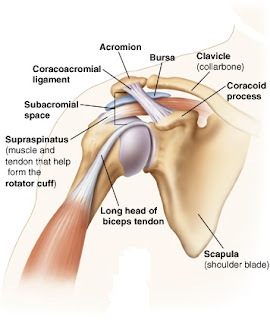EXERCISE IN WATER? WHY NOT?
“When the well is dry,
we know the worth of water”- Benjamin Franklin.
The very first thing that must have
come to your mind after reading the title must be swimming. That is true, but
swimming alone is not the only way of exercising in water. There are facilities
of exercising in water known as hydrotherapy in our rehabilitation centers
nowadays. The exercises that we perform on land can be done in water as well.
These physical activities include walking inside the pool, aerobics, and
movements of various body parts in water. But why do we need such advancement
in exercising techniques? Let’s have a look at the properties of water helping
during exercise.
·
Buoyancy:
The body of an individual in water weighs a lot lesser and hence water
provides more flexibility to the body. The upward thrust exerted by the water
on the body eliminates the effect of gravity. Water acts as a shock absorber
for the body of an individual, as a cushion, therefore there is reduced
pressure on the weight bearing joints and joint structures. This property of
water eventually decreases the chances of injury that are more while performing
exercise on land. The pressure also helps in reducing the swelling or edema of
the limbs.
·
Resistance:
Any movement when performed in water is resisted by its flow in all
directions. While performing strengthening exercise on land we use weights in
the form of dumbbells, therabands, weight cuffs etc. you need no such additional
object when you exercise in water which is much more convenient I guess. Due to
a higher resistance of water and more amount of energy required to carry out the
movements, it is helpful in burning lots of calories in obese.
·
Heart
rate:
Interestingly, water improves the efficiency of the heart due to the
pressure exerted by the hydrostatic forces. This property helps in lowering the
blood pressure and heartrate as compared to the heart rate while performing exercise
on land.
·
Vasodilation:
If you exercise in warm water, it helps in dilation of the blood vessels
enabling more blood to flow through the blood vessels. As a result, more amount
of blood reaches the tissues. In case of injury, this property helps in healing
of the soft tissue injuries as more amount of oxygen and nutrients are provided
to the tissues. Increased amount of blood flowing through the vessels flushes
out the cells waste and the toxins. The warmth provide a sedative effect to the
body, also helps in reducing pain in muscles, muscle spasm and tension and
provides relaxation to the body.
·
Lung
capacity:
As the water provides resistance to the body, there is more amount of
oxygen supplied to the tissues. This is increasing the amount of work done in
lungs to supply enough amount of oxygen. A person takes short and quick breaths
in water due to the forces of compression exerted by the water on the chest. There
is an increased work load on the lung and a lung workout is carried out this
way, increasing the lung capacity if you regularly follow your exercise
routine.




Comments